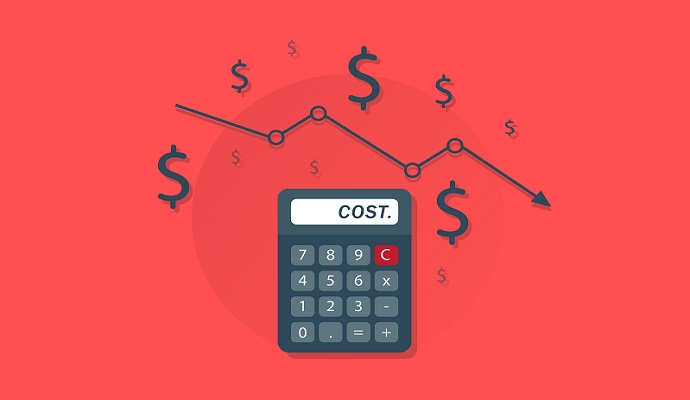Healthcare Price Transparency Order May Up Prices, Hospitals Warn
Hospital and payer groups expressed concerns over the new executive order on healthcare price transparency, arguing the order could decrease competition.

Source: Getty Images
- Public disclosure of negotiated contracts rates is a step in the wrong direction for healthcare price transparency, major hospital and payer groups are saying in response to a newly signed executive order.
Yesterday, President Trump signed the “Executive Order on Improving Price and Quality Transparency in American Healthcare to Put Patients First,” in which he directed HHS to propose a regulation within 60 days that requires hospitals to publicly post standard charge information, including charges and information based on negotiated rates in a patient-friendly format.
The executive order also included directions for making out-of-pocket cost information available to patients, addressing surprise medical bills, and empowering patients to gain greater control over their healthcare resources.
“For too long it's been virtually impossible for Americans to know the real quality and price of healthcare services and the services they receive,” President Trump said prior to signing the executive order. “As a result, patients face significant obstacles in shopping for the best care at the best price, driving up healthcare costs for everyone. With today's historic action, we are fundamentally changing the nature of the healthcare marketplace.”
Specifically, he said that regulations coming out of the executive order would increase competition by forcing hospitals to release actual costs of care, resulting in lower costs for patients and the system overall.
READ MORE: Going Above and Beyond the CMS Hospital Price Transparency Rule
However, hospitals and payers strongly disagree that publishing negotiated rates will increase competition.
The Federation of American Hospital’s (FAH) head Chip Kahn warned the Trump Administration that releasing negotiated rates is the “wrong course” that “may undercut the way insurers pay for hospital services resulting in higher spending.”
The industry’s leading payer group agreed with the FAH.
“Everyone deserves affordable coverage, and we share the Administration’s commitment to making health care more affordable for every American,” said Matt Eyles, president and CEO of America’s Health Insurance Plans (AHIP). “We also agree that patients should have accurate, real-time information about costs so they can make the best, most informed decisions about their care. But publicly disclosing competitively negotiated, proprietary rates will reduce competition and push prices higher – not lower – for consumers, patients, and taxpayers.”
Both Kahn and Eyles cited a 2015 memo from the Federal Trade Commission (FTC) that found a similar healthcare price transparency regulation in Minnesota to be anticompetitive.
READ MORE: Providers Oppose ONC’s Healthcare Price Transparency Strategy
“Such disclosure may chill competition by facilitating or increasing the likelihood of unlawful collusion, and may also undermine the effectiveness of selective contracting by health plans, which serve to reduce healthcare costs and improve overall value in the delivery of health care services … This risk of such harm is especially great if this information is accessible to competing healthcare providers, and in highly concentrated markets where competition among providers is already limited,” the commission stated.
Health economists are also voicing concerns over the executive order’s push to publicize negotiated rates.
Larry Leavitt, senior vice president for health reform at the Kaiser Family Foundation, tweeted, “I'm skeptical that disclosure of healthcare prices will drive prices down, and could even increase prices once hospitals and doctors know what their competitors down the street are getting paid.”
However, Leavitt also said “intense opposition by the hospital industry gives me some pause.”
Despite industry pushback, federal officials still remain optimistic that the executive order is a step in the right direction.
READ MORE: How Practices Can Benefit from Healthcare Price Transparency
“Today’s announcement exemplifies President Trump’s commitment to ensuring Americans have the right to know the price and quality of their healthcare,” said CMS Administrator Seema Verma. “Since day one, this Administration has made great strides in increasing transparency to foster competition in our healthcare system to keep care affordable, and empowering patients to make informed healthcare decisions. I am excited to implement these bold reforms to transform our healthcare system into one that delivers affordable and accessible healthcare, and puts American patients first.”
Patient advocacy groups are also supporting the healthcare price transparency effort.
“This is a bold first step towards system-wide price transparency and a competitive marketplace in healthcare,” said Cynthia Fisher, founder and chairman of PatientRightsAdvocate.org. “The American public as both patients and employers will greatly benefit by seeing real prices—readily searchable—before they receive care. By removing the blindfold from individuals and their employers, we can reduce the price of care and coverage and empower consumers to choose healthcare based upon the best quality of care at the lowest possible price.”
Research shows patients lack the information they need to reduce their healthcare costs. However, price transparency and cost comparison tools have not helped in the past.
A 2016 study published in Health Affairs found that patient access to a price transparency tool actually increased out-of-pocket costs for outpatient services by about $59 per patient. Other studies have also found that patients like the idea of a cost comparison tool but they ultimately did not use them.
Whether new healthcare price transparency regulations will boost patient access and use of cost information and comparison tools will depend on the direction HHS decides to take with the order.
